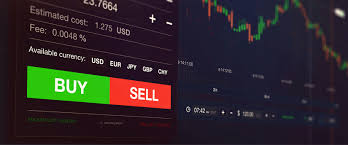
Forex Trading for Beginners: Your Ultimate Guide
Welcome to the world of Forex trading! If you’re a beginner eager to explore the dynamic foreign exchange market, you are in the right place. Forex trading can seem complex at first, but with the right guidance and knowledge, you can navigate it effectively. In this article, we’ll cover the basics of Forex trading, how it works, essential terminology, strategies for success, and tips to get you started. To facilitate your journey, you might also want to check out forex trading for beginners Best Indonesian Brokers which can provide valuable resources and support.
What is Forex Trading?
Forex trading, or foreign exchange trading, is the act of buying and selling currency pairs in the global market. The Forex market is the largest financial market in the world, with a daily trading volume exceeding $6 trillion. Unlike stock markets that operate during specific hours, the Forex market runs 24 hours a day, five days a week, allowing traders from different time zones to participate at any time.
How Does Forex Trading Work?
At its core, Forex trading involves the exchange of one currency for another. Currencies are traded in pairs, for example, EUR/USD (Euro/US Dollar) or GBP/JPY (British Pound/Japanese Yen). When you trade a currency pair, you are essentially speculating on the value of one currency relative to another. If you believe that the Euro will strengthen against the US Dollar, you would buy EUR/USD. Conversely, if you think the Euro will weaken, you would sell the pair.
Key Terminology in Forex Trading
Understanding Forex trading requires familiarity with specific terminology. Here are some essential terms:
- Currency Pair: A quotation of two different currencies, where one currency is quoted against the other.
- Pip: The smallest price move that a given exchange rate can make based on market convention.
- Leverage: The ability to control a larger position with a smaller amount of capital.
- Spread: The difference between the bid price and the ask price of a currency pair.
- Margin: The amount of capital required to open and maintain a leveraged position.
- Lot: A standardized unit of measurement for a quantity of currency being traded.
Getting Started with Forex Trading

Now that you have a basic understanding of Forex trading, let’s explore how to get started:
1. Choose a Reliable Broker
Selecting a reputable Forex broker is crucial. Look for brokers that are regulated, have a good reputation, offer competitive spreads, and a platform that suits your trading style. You may refer to resources that review and compare different brokers to find the best fit for your needs.
2. Open a Trading Account
Once you’ve chosen a broker, you’ll need to open a trading account. Brokers usually offer different account types based on your trading level. Consider starting with a demo account to practice your trading strategies without risking real money.
3. Learn Forex Trading Strategies
Understanding various trading strategies is vital for your success. Here are a few common strategies:
- Scalping: A quick trading strategy that involves making multiple trades over short time frames to capture small price movements.
- Day Trading: Involves buying and selling within the same day, closing all positions before the market closes.
- Swing Trading: A strategy that involves holding onto trades for several days or weeks to profit from expected price shifts.
4. Analyze the Market

Market analysis is crucial in Forex trading. There are two primary methods of analysis:
- Technical Analysis: Involves analyzing historical price movements using charts and indicators.
- Fundamental Analysis: Focuses on economic indicators, interest rates, and geopolitical events that might influence currency values.
Risk Management in Forex Trading
Risk management is an essential aspect of Forex trading that every trader should consider. Always use stop-loss orders to limit potential losses and never risk more than you can afford to lose. It’s advisable to keep a risk-to-reward ratio of at least 1:2.
Developing a Trading Plan
A well-structured trading plan defines your trading goals, risk tolerance, strategies, and evaluation criteria. Having a plan will help you remain disciplined and avoid emotional decision-making when trading.
Continuous Learning and Adaptation
The Forex market is dynamic, and continuous learning is vital for long-term success. Read books, follow financial news, attend webinars, and engage with online trading communities to enhance your knowledge and keep up with market trends.
Conclusion
Forex trading can be an exciting and potentially profitable endeavor for beginners. By understanding the basics, developing a trading strategy, and practicing proper risk management, you can start your journey in the foreign exchange market. Remember, patience and persistence are key. Begin with a demo account, practice diligently, and soon you’ll gain the confidence needed to trade with real money. Embrace the learning process, and best of luck in your Forex trading journey!
